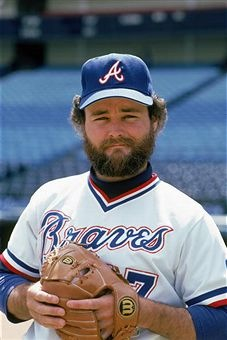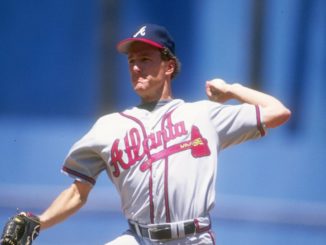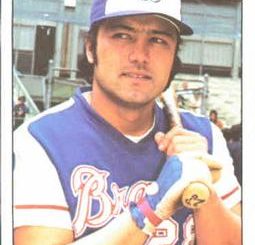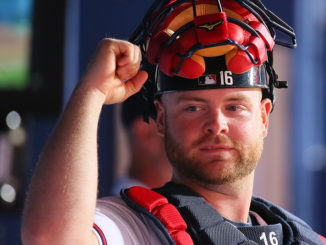See also: Best Brave By Uniform Number Index
The best Braves #17 is Glenn Hubbard (1978-1987). Hubbard never hit particularly well, though he was around league average with the bat in 1983 hitting .263/.334/.402 with 12 HR in his only All-Star season. Hubbard was a defensive stalwart throughout the 80’s. He never earned Gold Glove consideration, partially because he wasn’t a very good hitter (writers traditionally awarded better offensive players with their Gold Glove votes, perhaps subconsciously), but he was a solid up the middle player who spent a decade in the uniform.
Hubbard would sign with Oakland after becoming a free agent before the 1988 season, getting a World Series ring with the A’s in 1989, his final big league season as a player. After retiring he served as a minor league coach in the Braves system before making it back to the majors in 1999 as Atlanta’s first base coach. Hubbard was let go by Braves general manager Frank Wren after the 2010 season and the retirement of manager Bobby Cox. Kansas City was swift to pick up Hubbard and his decades of baseball experience, and he has coached in the Royals farm system since 2011, the last six years as the bench coach for the class-A Lexington Legends.
Honorable Mentions:
- Felix “The Cat” Millan (1967-1972) was an All-Star from ’69-’71, hitting .288/.331/.362 and averaging 14 SB a season in that span. In 1969 and 1972, he won Gold Glove awards at 2B. Millan’s Braves career was cut short by an ill-advised trade with the Mets in 1972. Millan would garner MVP votes in 1973, solidifying the Mets infield defense and helping the team to a first place finish and a World Series appearance.
- Perhaps the most notorious #17 was right-hander Andy Messersmith, the first baseball free agent, signed to a 3-year, $1 million contract by Braves owner Ted Turner in 1976. Always looking for new promotional opportunities, Turner replaced Messersmith’s name on the back of his jersey with “Channel” to advertise his WTBS television station, then broadcasting locally on channel 17. Major League Baseball quickly put the kibosh on the scheme, but fans can find the infamous jersey in the Braves Museum display at Truist Park. As for Messersmith, he turned in a quality 1976 season, going 11-11 with a 3.07 ERA in 208 innings, being named to the All-Star team. He fell off badly the following season however, and the Braves ended up selling the final year of the first free agent contract to the Yankees for 1978.
- Shelby Miller (2015) had one of the best single seasons for the Braves as #17, posting a 3.02 ERA and being named an All-Star. Unfortunately, his team gave him incredibly little run supportin the first year of a rebuild, and he led the NL with 17 losses. Miller would be traded that offseason to the Arizona Diamondbacks in a trade that netted Atlanta shortstop Dansby Swanson and outfielder Ender Inciarte and would ultimately cost Arizona general manager Dave Stewart his job as Miller suffered injury and ineffectiveness during his tenure with the team.
- Chet Nichols (1951-1956) won the 1951 ERA title (2.88) as a rookie, and finished 2nd in the ROY race. The rest of his career failed to live up to that standard, but it was a nice season.
- Bob Smith was a two-way shortstop/pitcher who played for the Boston Braves in two stints, 1925-30 and then 1933-37. Smith only wore #17 for two seasons, 1934-35, in which he threw 325 innings as a swingman and batted .263/.270/.273. By 1934 his shortstop days were behind him, but he remained one of the better hitting pitchers in baseball despite turning 40 years old by 1935.
Who Is the Best Ever To Wear #17?
It’s the best MLB player ever to be a backup QB to Peyton Manning. It’s Todd Helton!





Jim Wilson also pitched a no-hitter during that 1954 season. Glenn Hubbard was a decent second baseman (and probably was kind to his mother), but wasn’t close to Felix Millan in talent as a Brave.